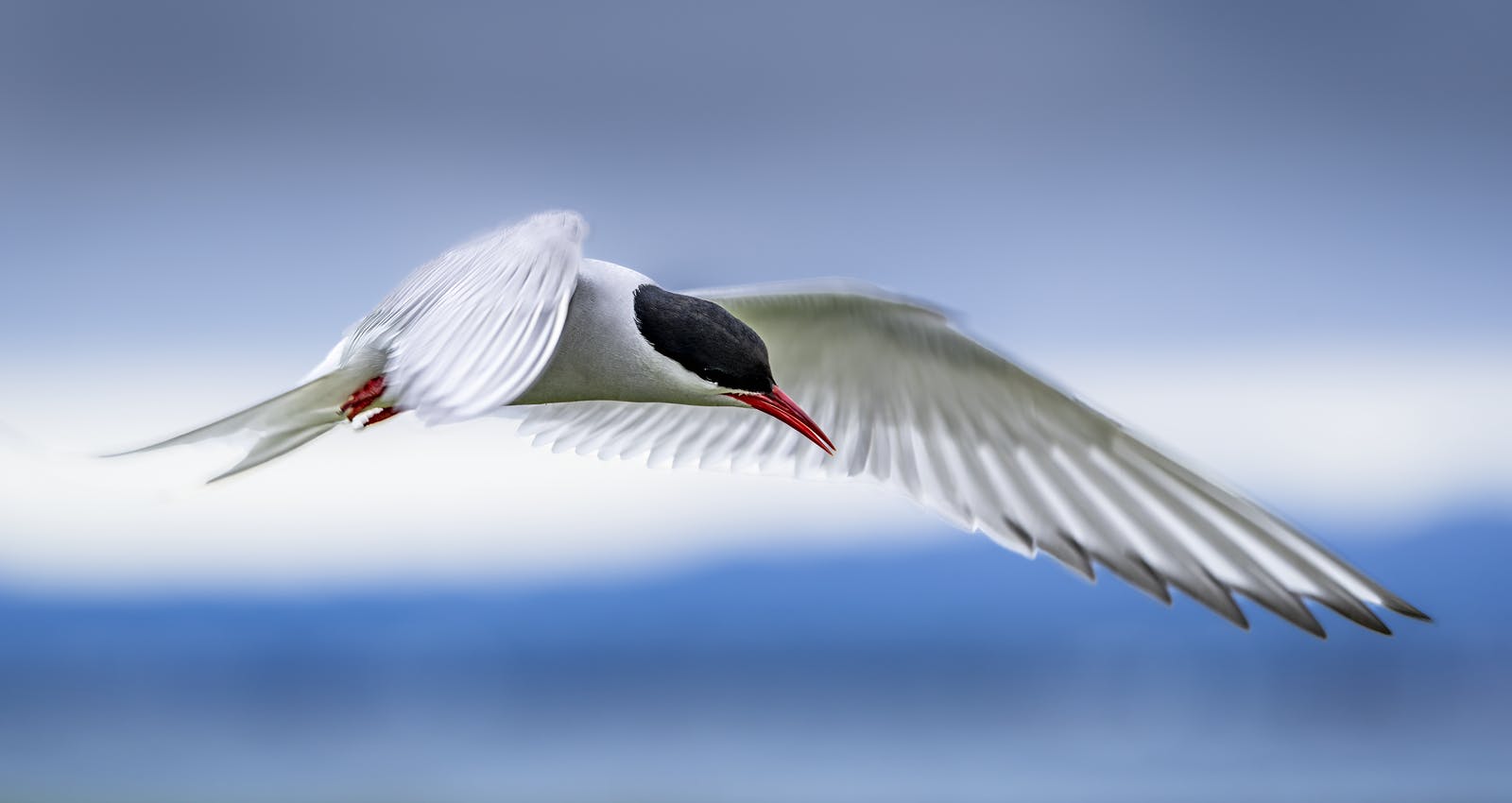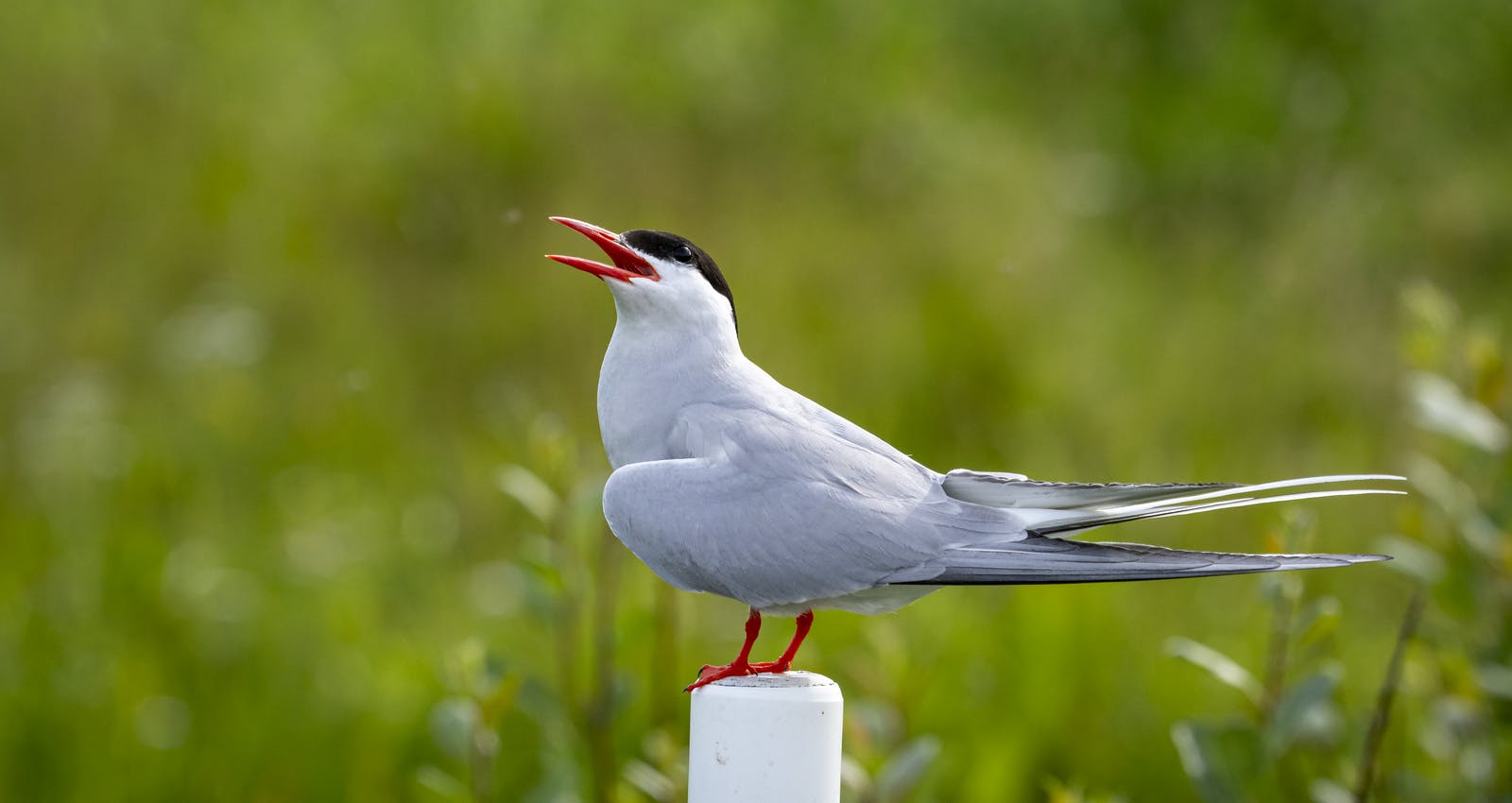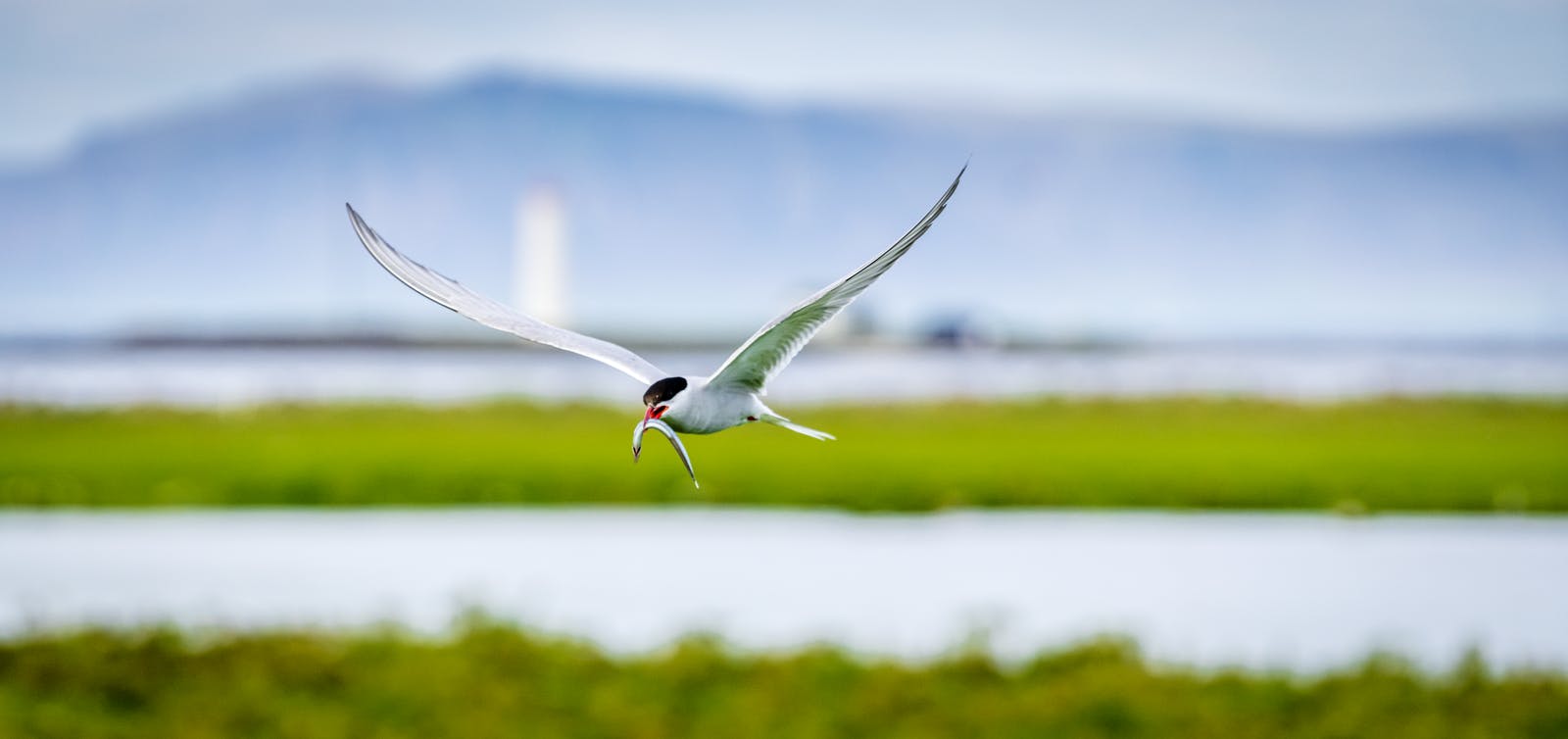
The Arctic Tern
Master of Long-Distance Migration
The Arctic tern (Sterna paradisaea) belongs to the tern family (Sternidae) and is usually simply called a tern. This very delicate bird weighs about 100 gr (3.5 oz). Adult terns are recognized by their deep forked tail, black hoods, and dark red beaks and feet. They are also white with a pale grey back and black wingtips. Juveniles have dark beaks and feet and lack the beautiful tails of the adult terns.
The tern is an Arctic bird and is very characteristic of summertime in the northern hemisphere. It has circumpolar breeding, distributed around Svalbard and Greenland, but is also found in Europe as far south as Britain and Holland. The tern is found all around Iceland but nests are mostly close to the sea. Still, there are some sparse colonies in the highlands near large lakes. The tern arrives in April/May, and in the minds of many Icelanders, it brings spring to the country just like our beloved Golden Plover (Pluvia lisapricaria).
Experience Wildlife and Nature in One Place
Perlan stands as Reykjavik's iconic Nature Exploratorium, offering immersive learning about Icelandic nature. Explore a real ice cave, engage with hands-on exhibits, witness a life-size bird cliff, and enjoy a volcanic show. The Planetarium dome theatre showcases virtual northern lights. The Icelandic Museum of Natural History also presents a hands-on exhibition at Perlan, unravelling the mysteries of water in Icelandic nature. Read more about Perlan’s different exhibitions here.
Population in Iceland and Their Nesting Habits

The tern population in Iceland is large, but it has declined in recent years. It is estimated that there are 150-250 breeding pairs in the country. The majority of the European tern population breeds in Iceland. Large colonies are found around the country, such as at Rif, Jökulsárlón, Vík and Hrísey, which is probably the biggest tern colony in Europe. A tern’s nest is quite simple. It is a small dent in the ground where the bird lays 2-3 small eggs, brown with dark spots. The tern often starts laying eggs in June and incubates for 20-22 days.
The adult birds then feed their young for 3-4 weeks or until it can fly. A tern chick’s menu consists mostly of small fish, sand eels (Ammodytes marinus) by the sea or sticklebacks (Gasterosteus aculeatus) in the highlands. The tern also feeds on insects and invertebrates when fish is scarce. Fluctuations in the sand eel population in Iceland in the past years have had a negative impact on the survival of chicks.
The Sky-High Life of Arctic and Antarctic Travelers
Terns spend most of their life flying between the Arctic and Antarctic and only sit for a short period to rest or incubate eggs. They are exceptionally good flyers and are often seen hanging in the air before taking a deep dive to catch food or to frighten an unwanted guest. Those bold enough to enter a tern colony will soon learn about terns‘ aggressiveness and flying abilities.
The whole colony takes flight, and the birds start taking sharp dives. They even try to pick the head of the intruder with their sharp beaks. And yes, it hurts! Many birds nest close to tern colonies for protection since breeding terns is an impressive air force.
The tern is a migratory bird and as soon as the summer ends it starts a long migration to the south. This delicate bird follows the sun and flies to South Africa when it starts to get dark in the northern hemisphere. A large part of the world's population spends the winter months in Antarctica. The tern is, therefore, one of the few that enjoys two summertimes per year and more daylight than any other creature.
Five Flying Facts About the Arctic Tern

- It is estimated that the tern flies a distance equal to about three times to the moon and back during its lifespan.
- The tern can reach 60 km/h (37 mi/h) speed when flying, and it takes her only about 90 days to fly between the poles of the Earth.
- The flight of the tern is a true natural wonder. No other bird takes on such journeys, flying on average 44,100 mi each year.
- When flying, the tern can stay still in the air while she scouts for fish or intruders before taking a deep dive towards the ground. No other bird in Iceland has this flying ability.
- Despite the terns‘ great flying abilities, they have some dangerous enemies. The Arctic skuas (Stercorariu sparasiticus) are also exceptionally great flyers and are well capable of stealing fish from flying terns.
Popular articles

Reykjanes Volcanoes Overview
Enjoy a complete overview of the Reykjanes Volcanoes from 2021-2024. Learn about its geology, recent activity, and visitor tips for a safe, memorable experience.

Reykjanes Peninsula Volcanoes: Sundhnúksgígar Eruptions
The anticipated volcano has erupted in the Reykjanes Peninsula, the site is being called Sundhnúkagígar. See the historic insights on the seismic activity and volcanic eruptions.

Earthquakes in Iceland
Earthquakes in Iceland are a fact of life. Each year, hundreds of small tremors shake the earth, a reminder of the country’s position on a tectonic plate boundary.

Volcano Museums and Exhibitions in Iceland
If you don't manage to visit an actively erupting volcano in Iceland - Experience its force at one of these excellent volcano museums and exhibitions in Iceland.

Top 10 Places To See the Northern Lights in Iceland
You can see the northern lights across the country, but some spots are more suitable than others. Find the best place to see the northern lights in Iceland.

Ice Caves From Reykjavik
Travel beyond the capital for a closer look at an ice cave under one of Iceland’s glaciers. If you can’t spare the time, experience Perlan’s ice cave in Reykjavik.